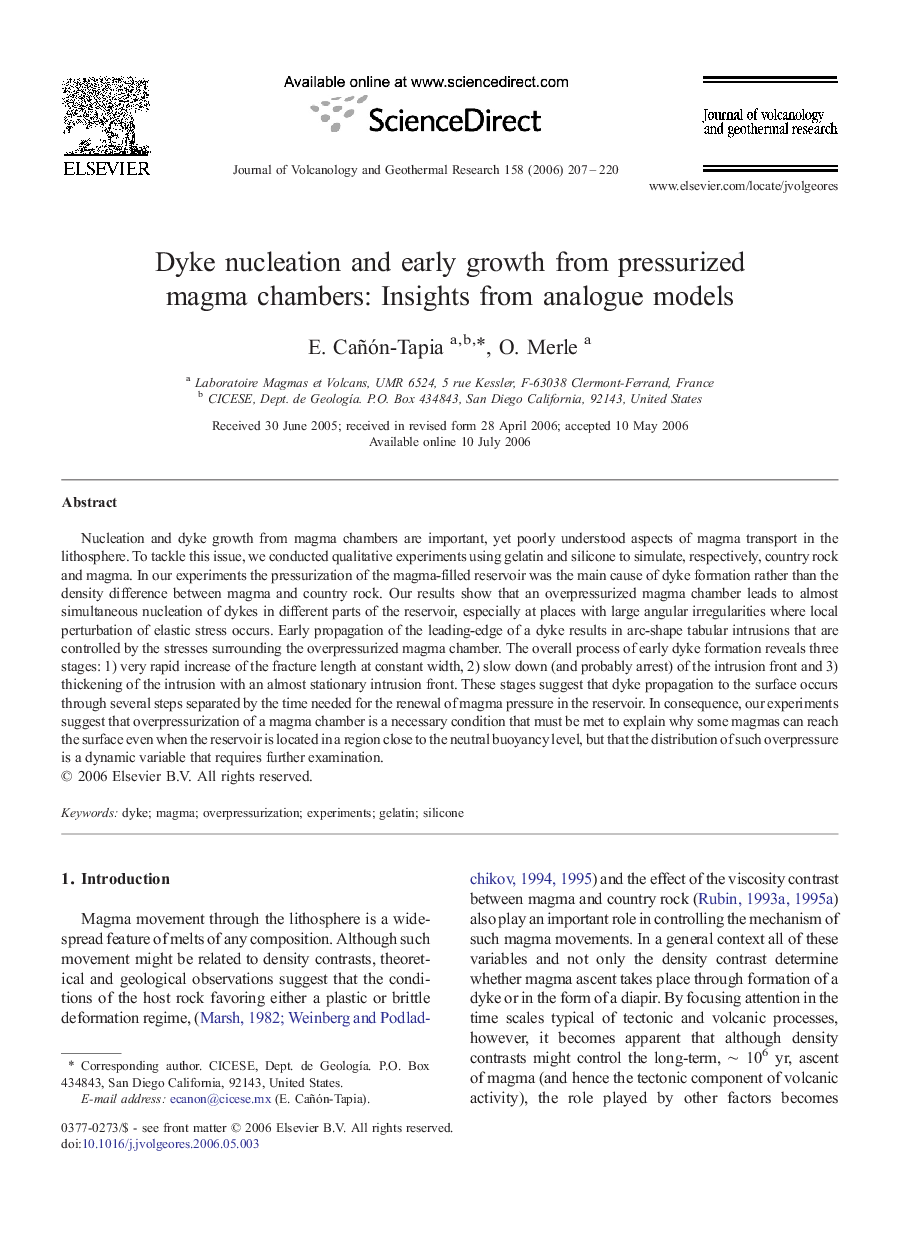| Article ID | Journal | Published Year | Pages | File Type |
|---|---|---|---|---|
| 4715000 | Journal of Volcanology and Geothermal Research | 2006 | 14 Pages |
Nucleation and dyke growth from magma chambers are important, yet poorly understood aspects of magma transport in the lithosphere. To tackle this issue, we conducted qualitative experiments using gelatin and silicone to simulate, respectively, country rock and magma. In our experiments the pressurization of the magma-filled reservoir was the main cause of dyke formation rather than the density difference between magma and country rock. Our results show that an overpressurized magma chamber leads to almost simultaneous nucleation of dykes in different parts of the reservoir, especially at places with large angular irregularities where local perturbation of elastic stress occurs. Early propagation of the leading-edge of a dyke results in arc-shape tabular intrusions that are controlled by the stresses surrounding the overpressurized magma chamber. The overall process of early dyke formation reveals three stages: 1) very rapid increase of the fracture length at constant width, 2) slow down (and probably arrest) of the intrusion front and 3) thickening of the intrusion with an almost stationary intrusion front. These stages suggest that dyke propagation to the surface occurs through several steps separated by the time needed for the renewal of magma pressure in the reservoir. In consequence, our experiments suggest that overpressurization of a magma chamber is a necessary condition that must be met to explain why some magmas can reach the surface even when the reservoir is located in a region close to the neutral buoyancy level, but that the distribution of such overpressure is a dynamic variable that requires further examination.
